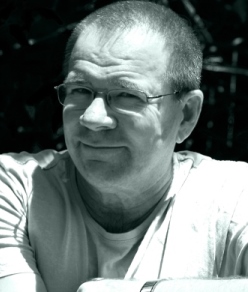Despite many years of public education and campaigns in relation to mental health, schizophrenia continues to be a misunderstood mental illness.
When people fear that they might be going “mad” it is the symptom list of a schizophrenic illness that they point to.
In films, on television, and in books, the term “schizophrenia” is used interchangeably with “split personality”. Yet the two disorders are completely different and have nothing to do with each other. Clearly the problem is the name, since ‘schizophrenia’ is based on the greek “skhizein”(to split) + “phren” (diaphragm, heart, mind). In actuality, the splitting that is referred to in schizophrenia is the break from reality orientation that goes along with the illness – a break in the mind’s ability to judge reality from fantasy.
What Causes Schizophrenia?
Schizophrenia is a serious and potentially chronic illness which is part of the group of mental illnesses known as “psychoses”. About 1 in 100 people will develop a schizophrenic illness.
It is generally understood that genetics plays a major part in the cause of the illness, though the outcome and wellbeing of a person suffering from schizophrenia is closely connected to environmental factors – such as stress, drug and alcohol abuse, and family functioning.
Schizophrenia usually first appears in adolescence or early adulthood (though it can occur earlier or later), and there are some differences between men and women as to when a first episode usually occurs. Some people may have only a single episode of psychotic symptoms and never go on to develop a schizophrenic illness. Where a person has a recurrence of psychotic symptoms after recovering from their first episode, they are then likely to continue to have symptoms of schizophrenia throughout their life.
Schizophrenia Symptoms
Symptoms of schizophrenia are split into two groups – positive symptoms and negative symptoms. The positive symptoms are those that are most frequently seen when a person is acutely unwell. Positive symptoms include:
- Delusions – beliefs about the world that are divorced from reality (ie thoughts being inserted in their head, people talking about them, rooms being bugged, etc); affects around 90% of sufferers.
- Hallucinations – seeing or hearing things that are not there (ie voices commenting on what they’re doing, abusing them). About 50% of sufferers have auditory hallucinations, while only 15% have visual hallucinations.
- Disorganised thinking – planning and organising speech is disrupted (eg speech may jump from topic to topic with no logical connection).
- Disorganised behaviour – planning and organising activities is disrupted (eg may find it difficult to manage daily tasks or carry out work duties).
Negative symptoms include:
- Withdrawal from friends and family.
- Loss of motivation.
- Loss of feeling.
- Reduced speech – the person may speak with difficulty, many pauses, and low volume.
- Flat presentation – facial expression is limited, reduced body language, less spontaneity.
The course of a schizophrenic illness can be chronic – with the person experiencing repeated episodes of positive symptoms followed by periods of negative symptoms. Obviously this can be extremely disruptive to the person’s life and they may find it difficult to maintain study, work and relationships.
However, there are now many effective treatments and social supports for people suffering from schizophrenia which means that the effects of the illness can be managed and minimised. The most important treatment is medication – finding the right anti-psychotic drug is very important – though many people suffering schizophrenia find the drug regimens challenging, and failure to take medication is a common cause for relapse.
 Additional interventions that are useful are cognitive approaches that help the sufferer to maintain a reality orientation; stress management; education about symptom management and relapse prevention; family education about managing the illness; communication training for family and friends; support for developing or maintaining daily living; and work skills.
Additional interventions that are useful are cognitive approaches that help the sufferer to maintain a reality orientation; stress management; education about symptom management and relapse prevention; family education about managing the illness; communication training for family and friends; support for developing or maintaining daily living; and work skills.
On the whole, the best approach to helping someone suffering from schizophrenia is a multidisciplinary one. The person should have input from psychiatrists, clinical psychologists, occupational therapists, social workers and psychiatric nurses. Whether or not they have full access to services to support them in the community depends very much on where they live, and people suffering from schizophrenia in rural and remote areas can be significantly disadvantaged.
Schizophrenia Myths
There are a few pervasive myths about schizophrenia which can make understanding and dealing with the illness more distressing and complicated.
Myth 1 – Schizophrenia is caused by the family – particularly mothers. This is a holdover from early theories about schizophrenia that have now been proven to be unfounded. Nonetheless, many families expect to be blamed for their child’s illness and this can sometimes lead to difficulties for them in seeking and using professional help. It is true that the communication within families can be very disrupted by the time that a sufferer receives help. The communication between family members may be so disordered that it creates a really stressful environment for the person suffering from schizophrenia which increases the possibility of relapse. Family education and intervention can be very important to help with this.
Myth 2 – People suffering from schizophrenia are prone to violence and aggression. Many people fear that someone suffering schizophrenia is more likely to be a killer because they are unstable and unpredictable. People suffering from schizophrenia do often behave strangely when they are acutely unwell and that can be scary for people who are not used to dealing with this. More often, however, people suffering schizophrenia are anxious and afraid or depressed, rather than angry or aggressive. In actuality, people suffering from schizophrenia are no more and no less likely to be violent than any normal person. A diagnosis of schizophrenia does not increase the likelihood that someone will be aggressive or criminal.
Myth 3 – A diagnosis of schizophrenia is a sentence to a life of misery, poverty, and unhappiness. There are many effective treatments for schizophrenia now and, in many ways, it is no worse than a diagnosis of any chronic medical illness. Being aware of stress, early warning signs, and relapse indicators means that the person is able to participate in the management of their condition and find ways of minimising the disruptions that might occur from acute episodes. With the right medical management and family and community support, a person suffering from schizophrenia can live a rich, varied and fulfilling life.
 Author: Dr Alistair Campbell, BA (Hons), M Psych (Clinical), PhD.
Author: Dr Alistair Campbell, BA (Hons), M Psych (Clinical), PhD.
Dr Alistair Campbell is a Clinical Psychologist working with individuals, couples and families. He is trained and experienced in a wide range of therapies including Narrative; Systemic; Solution Oriented; Narrative; Cognitive; Behavioural; and Hypnosis approaches.
To make an appointment try Online Booking. Alternatively, you can call M1 Psychology Brisbane on (07) 3067 9129